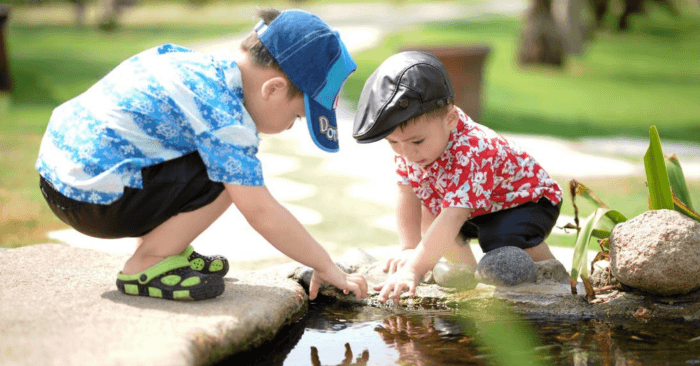
Top Activity-Based and Hands-On Learning Centres and Schools - Whizpa
Emergence of Activity-Based Learning Much has been written about how good education should not just focus on academic attainment but also embrace genuine learning, creative teaching, and the overall development of the child. Do you wonder whether our kids get to experience these in most of the schools in Hong Kong? Or amidst the tremendous pressure to succeed at all costs, have we, as a society, forgotten that schooling can also be fun?
You may have noticed that many schools in Hong Kong are still focused on using the traditional lecture method to impart knowledge to their students, and are driven to simply complete the set curriculums. However, some schools are now leaning towards a more progressive teaching methodology, i.e. “activity/play-based learning” (also called hands-on learning). In an activity-based classroom, playtime is considered an important component of learning, and not merely a reward for good behavior.
It’s interesting to note that the premise of activity-based learning stems from the fact that at an early age, young children are more kinesthetic i.e. they are physical, tactile, and they use all their senses more than adults do. They are naturally motivated to play. They absorb more when learning is active, and when they are engaged in hands-on classroom games and activities.
Why This Interest in Activity/Play-Based Programs?
Some of us may argue that we all have been to schools where the primary teaching methodology was direct instruction/lecture-based. Given ‘we all turned out fine’, so will our children. It is true that the teacher-led learning and direct instruction methods have their place in educational contexts, but there is strong evidence that points to the benefits of good quality play-based programs for our younger learners.
Scientists believe that when children use all their senses, the brain creates pathways that make it easier and quicker to retain information. In fact, students of all ages can benefit from adding hands-on classroom games and activities to their learning.
There is an old proverb that says:
“I hear and I forget.
I see and I remember.
I do and I understand.”
This holds true, especially with regards to activity-based learning techniques.
Play also supports positive attitudes to learning. These include imagination, curiosity, enthusiasm, and persistence. The types of learning processes and skills fostered by play cannot be replicated through learning based on memorization, where there is an emphasis on remembering facts. Play-based programs for young children can provide a strong basis for later success at school. They support the development of socially competent learners, who are able to face challenges, and find solutions.
Research shows that play-based learning promotes improved learning outcomes such as better vocabulary, grammar, and non verbal IQ, as compared to the direct-instruction/lecture approach. This is because in play-based classroom environments, children have greater, more active input into what they do and how they learn.
Food for thought: don’t you think it would be easier to learn math while playing with blocks, dolls and cars rather than just watching teachers scribbling with chalk and trying to explain mathematical concepts on a blackboard? Or wouldn’t learning about the anatomy of insects through visiting a botanical garden be more fun than listening to a lecture?
Research also highlights that younger kids who are exposed only to lecture-style instruction methods at school are more prone to experiencing negative effects such as stress, reduced motivation to learn, and behavioral issues.
Doesn’t this revelation warrant a re-evaluation of the structure of the lecture-based teaching methodology?
Do Teachers Have A Role to Play in Activity/Play-Based Learning Programs?
The answer is a resounding YES!
The inquiry-based nature of play ought to be supported through the social interactions between teachers and children. In a classroom setting, teachers are expected to be vigilant about the dynamics of the group and provide the necessary guidance to ensure that their class is on the right path to learning the necessary skills and lessons. They are trained to do the following:
- Suggest role changes
- Introduce more appropriate vocabulary or words
- Be in control of the class especially when children get too loud or disrupt the learning of their classmates
- Facilitate development of social skills such as cooperation, sharing, idea generation, and conflict resolution
- A teacher’s role continues to be equally crucial in play-based settings
How Does Activity-Based Learning Actually Work?
No matter what subject we are dealing with, hands-on activities can be added and adapted to any curriculum. Let’s have a look at how we can use activity-based learning in a practical way.
Social Studies
Any social studies topic that students study can be turned into a hands-on activity. Here are a few examples.
- Cultural orientation: for instance, if children are learning about Singaporean culture, they could prepare a traditional Singaporean meal, dress up as Singaporeans, or learn a traditional Singaporean dance form and present it to the class.
- Understanding how to be a good citizen: children may be asked to explore 1) How would you help people at home? 2) What should you treat each other in school? 3) How would you show respect for people in the community? Students could be asked to illustrate through posters or role-playing the ways to be a good citizen at home, in school, or in society.
Language Arts
There are endless possibilities for hands-on activities when it comes to language arts. Here are a few ideas.
- Word Formations: students may be asked to use magnetic letters, sand, shaving cream, or clay to practice writing letters, sentences, synonyms, antonyms, etc.
- Rhyming Words: a fun and engaging lesson for kindergarten students may be built around rhyming words. Students may be asked to come up with rhyming words either individually, in pairs or in teams.
Mathematics
Students can be given jelly beans, coins, or candies to help them solve math problems. Here are a few hands-on activities to help students learn math.
- Value of Money: kindergarten students may learn about coins and their different values. Teachers could ask students to use a magnifying glass to examine each coin and then sort them into jars.
- Measurements: kids can practice pouring rice into a beaker. Teachers may have the kids line up the beakers from largest to smallest. Using comparative words like big/small or empty/full, teachers could help pre-schoolers learn about simple concepts of measurement.
Science
Hands-on science learning is fun and may involve setting up experiments. Here is a simple experiment for elementary students to understand the materials a magnet can pull.
- Mystical Magnets: students may be asked to collect some articles from around the classroom to test which ones get pulled in by a magnet and which ones don’t.
Art
Colors fascinate young children as they are one of the most noticeable attributes of the world around us.
Here is a simple exercise to engage kids in exploring color and art.
- Primary and Secondary Colors: teachers may help students fill three glass bowls with water and add red, yellow and blue food coloring. They can then show kids how to mix colors one by one to understand how new colors form.
Conclusion
The end goal of education is to enhance the development of children, facilitate holistic learning and enable them to understand how things work so that they can apply what they have learned at school for the betterment and enrichment of their lives and those of others. It is up to us as educators, as teachers, and as parents to allow them to do it in the best possible manner. We believe that hands-on learning is part of the larger solution.
We are at an age where we don’t want our children to grow up to be storehouses of knowledge and facts alone; we want them to grow up to be well-rounded individuals with the right amount of confidence, courage, and compassion in their hearts.
Do you now feel a bit more inclined to introduce play-based activities in your child’s study regime?
Browse whizpa.com to find activity-based learning experiences near you. Search for a variety of subjects such as:








